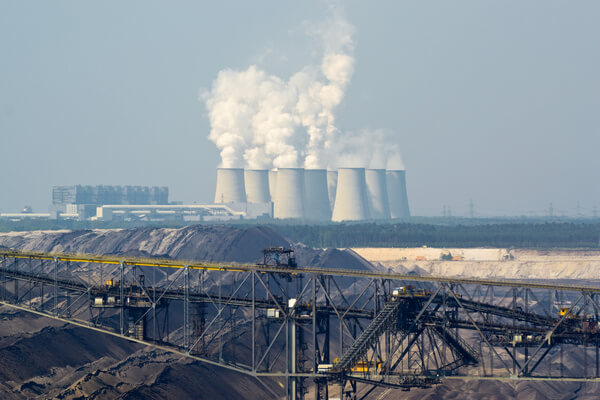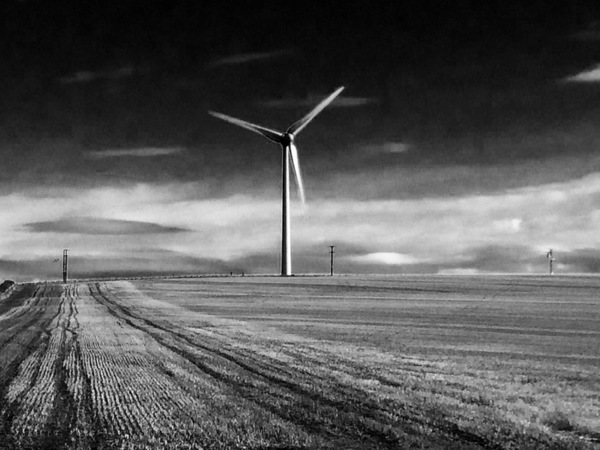News Release from windfair.net
Wind Industry Profile of
India – Waking The Sleeping Giant
India is the world's third largest producer of greenhouse gases (after China and the US). However, a change of thinking has taken place in recent years. Similar to the Chinese, who first had to suffocate in smog, the Indians also have recognized slowly that there can be no 'business as usual' in the face of an ever-increasing climate change. And in view of the trench battles in Europe, where countries are now mainly concerned with compensation for fossil energy producers, capping output and abolishing tax incentives for renewables, and an American president who denies climate change, India seems ready to take a new role in the fighting it.
However, the country's developement is still in its infancy here. The starting point for rethinking has been the election of Narendra Modi as Prime Minister, under whose government the push towards renewable energies is strengthened. The current plan envisages a rise in renewable energies to 175 gigawatts by 2022, which corresponds to five times the present share. Wind energy is expected to more than double, solar energy shall grow by 15 times, starting from the level in April 2016. Such ambitious targets would make India one of the world's leading renewable energy countries.
In addition, the Prime Minister has made it easier for companies from abroad to establish branches in the country – a basic requirement for pushing the economy towards the level of the rest of the world.
Wind power plays a major role in the future energy mix in India (Photo: Katrin Radtke)
Nevertheless, the forecasts up to recently have not looked good concerning the final departure from the hitherto dominant coal industry with its share of around 60 per cent in the energy production. Also due to a lack of grid infrastructure, India was predicted to be dependent on this form of fossil energy production until at least the 2030s or 2040s, which would have meant a consistently high emission of harmful CO2.
It was only at the beginning of this year that Indian Energy Minister, Piyush Goyal, announced positive news at an event for the first time ever: "We see India becoming the energy capital of the world. India is also committed to lowering the emissions intensity of its development in line with our INDCs towards the Paris Agreement. We are looking at several initiatives towards making solar energy price competitive to coal.”
In addition to massive investments in grid expansion, which have been pushed forward in recent years, another reason for this turnaround is the global development of costs for renewables, which has also reached a record low in India: For the first time ever in Asia, an auction (by the Indian government) for solar and wind energy projects took place, whose low prices brought fossil energy into trouble. At the auction, prices of 2.97 Rupees (€ 0.04) per kilowatt hour for solar projects and 3.46 Rupees (€ 0.05) for wind projects were achieved.
In view of the apparently unlimited availability of renewable energy, a study called ‘Transitions in the Indian Energy Sector – Macro Level Analysis of Demand and Supply Side Options‘ by Indian think tank TERI suggested for India not to invest in any further coal-fired power plants. Regarding the projects that are already under construction or have been approved and add the usual life span of a coal-fired power plant of 30 to 35 years, India could be coal-free in 2050.

No more investments in coal-fired power stations (Photo: Blumenkind / Fotolia)
Dr. Ajay Mathur, Chairman of TERI, highlighted the key findings: “The target to achieve the UNFCCC commitments presents tremendous opportunity to put India at the forefront of economies transitioning towards low carbon growth. This includes improving electricity access, clean technology development, manufacturing, and job creation. Our report shows that the cost of renewable electricity and its storage is on a steady decline and could stabilise at around Rs 5 per KWh. This would enable India to move decisively towards renewables for future generation. What this means is that India has a ten-year window where no new investments are likely to be done in coal, gas, or nuclear energy generation.”
In addition, the decarbonisation of electricity generation would also free up capacities in other sectors such as transport. To achieve this, the country has to pursue its course consistently and, above all, to offer a stable policy in the energy sector. If India will do so together with China, the power relations in climate protection could soon shift away: from Europe and the US to Asia.
- Author:
- Katrin Radtke
- Email:
- press@windfair.net

